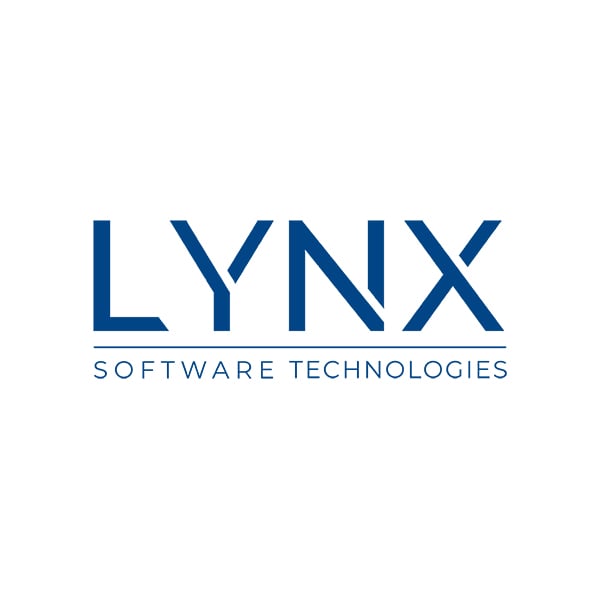San Jose, California, February 26, 2019 – Lynx Software Technologies today announced Lynx MOSA.ic™, a software development framework for building modular, comprehensible software systems. Lynx MOSA.ic adds a new perspective to application development that simplifies the creation, certification, and maintenance of inherently complex software systems, giving developers deeper insight and increased control over how applications are realized onto modern CPUs.
Will Keegan, Chief Technology Officer, Lynx Software Technologies, commented, “The majority of the pain points faced in software-based systems stem from overly complex platforms rooted in porous foundational architecture. As a platform vendor it is non-trivial to maintain robust assurances while accommodating the relentless demands of new features, hardware compatibility, and legacy interoperability. Lynx MOSA.ic™ has been carefully crafted at the architecture level to adapt to changes while preserving fundamental assurance properties—a balance elegantly achieved through maintaining the absolute minimum amount of abstraction layers.”
“Across the industry, Arm®v-8A architecture virtualization features are crucial in enabling software development for safety and security-critical systems for applications including autonomous and connected vehicles,” said Robert Day, Director, Automotive Solutions & Platforms, Automotive and IoT Line of Business, Arm. “Arm is expanding developer support by collaborating with leaders like Lynx to reduce costs, complexity and development time by forging a robust and comprehensible software platform based on Arm processors.”
Xilinx Zynq UltraScale+ MPSoC is one of the first platforms to be supported on MOSA.ic. Simon George, Director, Marketing - System Software and SoC Solutions at Xilinx, added, “The combination of LynxSecure and the Xilinx Zynq UltraScale+ MPSoC gives developers in safety-critical industries the ability to build solutions that meet their exacting demands. Lynx MOSA.ic is an advance in helping these developers create, certify and maintain the highly complex systems they are designing using our newest technology."
In the traditional, operating system (OS)-based model of application development, applications must rely on OS APIs for transferring and storing data, forcing applications to inherit the architecture properties of their underlying OS. Assuming multiple layers of abstraction beginning at the application level, developers have had little alternative but to embrace higher levels of resulting system complexity, keeping overall system comprehensibility out of reach. It is tremendously difficult to manage and maintain such complex systems, as unintended system behaviors — rooted in those same hidden layers of complexity — lead to critical safety failures and security breaches.
Lynx MOSA.ic leverages CPU virtualization to offer a simpler distributed resource control model in place of the traditional OS-based central resource management model; removing as much complexity as possible between application interfaces and hardware. Founded on a configurable framework for partitioning hardware, Lynx MOSA.ic™ begins by decentralizing resource management and application services, allowing independent applications to manage their own resources. Developers are then provided with cross development kits for building application modules of varying size, quality, and complexity, as well as integration tools for linking in partner and competitor provided modules — modules which can then be precisely mapped to independently managed hardware resources.
By relinquishing central control over the CPU, Lynx MOSA.ic opens the path to comprehensibility and unlocks unprecedented modular integration capabilities for the rapid development of robust systems.
Lynx MOSA.ic delivers on the vision of the Modular Open Systems Approach (MOSA). Lynx MOSA.ic — a “Modular Open Systems Architecture Integration Center” — uniquely allows developers to integrate independent software components within its development framework — including previously compiled legacy components and components authored by competing vendors — bringing the concept of MOSA to the command line. Lynx MOSA.ic delivers the highest number of options at the lowest possible lifetime cost for rapidly building robust, resilient, reusable software systems.
The foundation of Lynx MOSA.ic is a programmable processor partitioning system based on the proven LynxSecure separation kernel hypervisor. Unlike traditional hypervisors — which uniformly manage host virtual machines (VMs) through a centralized resource manager —LynxSecure isolates computing resources into independent distributed environments which are uniquely capable of managing themselves while providing software development tools for building guests at just the right complexity levels demanded by specific target environments. Forgoing the traditionally inherited complexities of a centralized resource management model, Lynx MOSA.ic unlocks multi-core virtualization as a viable option for managing the costs and design challenges faced when building robust software systems within highly regulated embedded markets.
About Lynx Software Technologies
Every day, millions of people worldwide benefit from products that rely on Lynx Software Technologies — from Internet and phone communications, to airline flight-control systems, office automation, and medical devices.
An innovator in modern platform software technologies, Lynx provides the richest set of options for efficiently realizing robust, comprehensible software systems onto modern CPUs.
Lynx has crafted and adapted platform architectures over thirty years of processor evolution, beginning with the LynxOS® real-time operating system (RTOS), which offered a UNIX®-like user model and standard POSIX interfaces to developers of embedded systems. LynxOS® was one of the first operating systems to leverage hardware memory protection capabilities and featured a state-of-the-art scalable real-time thread execution model. LynxOS-178 — a 2nd Generation refinement of the LynxOS RTOS — introduced kernel partitioning and ARINC API standards to the avionic development community. LynxOS-178 is developed and certified to the distinguished FAA DO-178C DAL A safety standard and received the first and only FAA Reusable Software Component certificate. Lynx MOSA.ic™ extends this proud history of innovation by leveraging CPU virtualization to further simplify and decentralize platform abstraction layers, providing a modular development & integration framework for rapidly building software systems out of independent application modules.
###
Lynx Software Technologies and MOSA.ic are trademarks and LynxOS is a registered trademark of Lynx Software Technologies, Inc. Other brand or product names are registered trademarks or trademarks of the respective holders.




